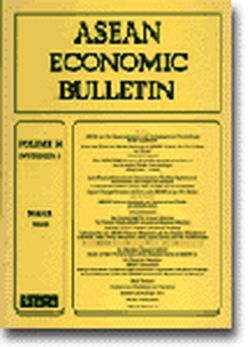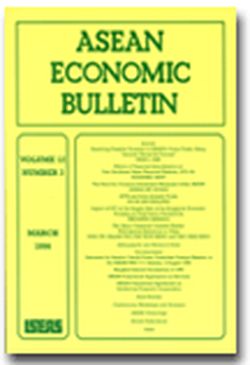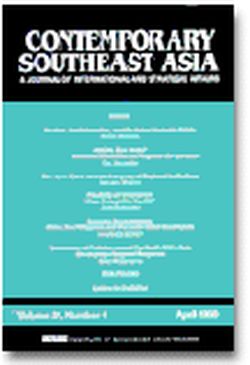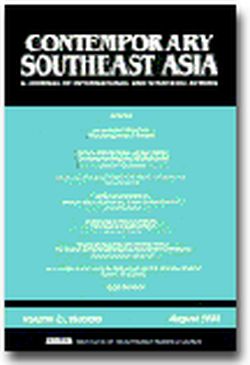ASEAN Economic Bulletin Vol. 14/2 (Nov 1997). Special Focus issue in Commemoration of ASEAN's 30th Anniversary
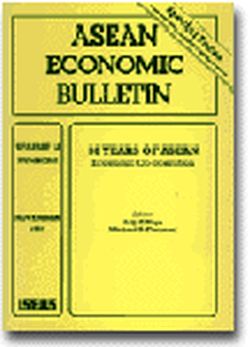
Date of publication:
November 1997
Publisher:
Institute of Southeast Asian Studies
Number of pages:
102
Code:
AE14/2
About the publication
Special Focus Issue on 30 Years of ASEAN: Economic Co-operation
Contents
-
Preliminary pages, by Michael G Plummer, Seiji F Naya, authors
-
Economic Co-operation after 30 Years of ASEAN, by Seiji F Naya, Michael G Plummer, contributors see abstractASEAN has made remarkable strides in economic co-operation since its very humble beginnings. Starting with bold and innovative approaches in the late 1980s and early 1990s, ASEAN leaders began to develop more ambitious means of economic co-operation, at the same time that political/diplomatic imperatives were falling in importance. This culminated in the creation of an ASEAN Free Trade Area (AFTA) at the Fourth Summit in 1992. Since then, ASEAN has expanded coverage of AFTA, expedited the liberalization process, and has embarked on deeper regional economic integration accords. While many of these latter initiatives are only now being developed, they are indicative of the intentions of the ASEAN leaders to create a unified marketplace in a wider Southeast Asian region.
-
Towards One Southeast Asia, by Ajit Singh, contributor see abstractEmbracing an 'open-regionalism' approach to economic co-operation through the ASEAN Free Trade Area and other initiatives, ASEAN is now expanding membership ultimately to include all of Southeast Asia: Vietnam joined in 1995 and Laos and Myanmar in 1997. This ASEAN enlargement should create important advantages for ASEAN countries, not only because of the inherent economic complementarities between the acceding and existing members states, but also because of the positive implications for regional political stability and international affairs. Nevertheless, great efforts will be needed to integrate Laos and Myanmar into ASEAN. The role of scholars in helping provide information, analysis, and recommendations regarding ASEAN economic deepening and widening will continue to be important in addressing these issues.
-
Towards a Political Economy Explanation of Rapid Growth in ASEAN: A Survey and Analysis, by Hal Hill, contributor see abstractThis article offers an explanation for the rapid economic development of the four high-growth economies of Southeast Asia (Indonesia, Malaysia, Singapore, and Thailand) over the past 30 years. It initially provides a brief review of the major determinants of international differences in economic performance, drawing on both the economic growth and the âEast Asian miracleâ literature, and a confirmation that these determining factors have been operative to some extent in the four countries. The major section of the article addresses the political economy question of why, over the past 30 years, these countries have generally adopted the ârightâ development policies more than is the case almost anywhere else outside East Asia.
-
ASEAN: Forum, Caucus, and Community, by Charles E Morrison , contributor see abstractThe most important benefits of ASEAN economic co-operation to date have probably derived more from the associationâs broad role in maintaining a harmonious international order than in the form of specific benefits of economic co-operation. This article considers the evolution of co-operation in ASEAN from a political-economy context, noting the considerable progress the association has made over the years. It addresses three principal issues in this context: what has been the motivation behind ASEAN co-operaiton in its 30 years of existence? How will new regional arrangements affect ASEAN co-operation? What will be the implications of the ASEAN enlargement for political and other forms of co-operation?
-
How Far Is Indochina from ASEAN?, by Rolf J Langhammer, contributor see abstractThe enlargement of ASEAN to include the Indochinese countries is an important step in the creation of an integrated Southeast Asian marketplace. Nevertheless, the divergent levels of economic development between these countries will pose important challenges for the acceding countries as well as for ASEAN itself. This article considers the economic âdistanceâ of the Indochinese countries from the ASEAN norm and ponders the implications of this divergence from the perspective of regional integration, with the experience of the European Union (EU) and the Central and Eastern European countries as a yardstick.
-
Direct Foreign Investment and Technology Transfer in ASEAN, by Manuel F Montes, contributor see abstractTechnological upgrading constitutes a critical element of the development process. Member countries of the Association of Southeast Asian Nations (ASEAN) have placed a strong emphasis on attracting direct foreign investment (DFI) flows as a means of promoting technology transfer. This article explores the relationship between DFI and technological upgrading in a developing-country context, with an emphasis on ASEAN. It begins with a review of the theoretical literature on DFI and real-world applications in the ASEAN countries. Next, it develops a simple model of technological upgrading in ASEAN, which underscores the importance of national policies in the process. Finally, it considers how multinational enterprises and DFI are contributing to regional economic integration in ASEAN.
-
AFTA and the Global Track, by Peter A Petri, contributor see abstractThe trade negotiations of the 1990s, and ASEANâs trade initiatives in particular, are proceeding on multiple tracks â regional (AFTA), super-regional (APEC) and global (WTO). This article explores why parallel tracks seem to be necessary and how they might be better coordinated. A key factor behind these trends is the competition for foreign investment. Countries are attempting to attract regional production systems that require large markets and draw on diverse factors of production by pursuing joint liberalization with regional partners. At the same time, they are also trying to avoid costly trade diversion and to maximize market access for their exports by participating in larger regional and global liberalization efforts, and by liberalizing unilaterally. These multiple objectives find expression in âopen regionalismâ, which aims to achieve close regional integration but also extends liberalization to extra-regional partners. Evidence from quantitative modeling and from ASEANâs policy experience is used to support these observations.
-
ASEAN and the Theory of Regional Economic Integration: A Survey, by Michael G Plummer, contributor see abstractThe theoretical literature concerning the economic effects of regional integration has made considerable progress since the seminal work by Viner (1950). However, the majority of theoretical and empirical research in this area continues to focus on the static effects of Preferential Trade groupings (PTGs). Designed as a selected survey, this article suggests that, for developing countries like ASEAN, the more relevant areas pertain to the dynamic effects of regional integration, as well as the implications of PTGs in a dynamic-policy-reform context. It is argued that ASEAN will continue to benefit from AFTA and further âdeepeningâ measures through the effects on reinforcing macroeconomic stability, encouraging investment flows, fostering technology transfer, reducing intra-regional transactions costs to doing business, and supporting policy reform in the region. ASEANâs new member states will likewise be able to benefit from the regional integration programme in Southeast Asia. Finally, we predict that ASEAN regional integration will help ASEAN countries overcome periodic crises by, among other things, locking in regional economic reform and providing information sharing regarding crisis management.


